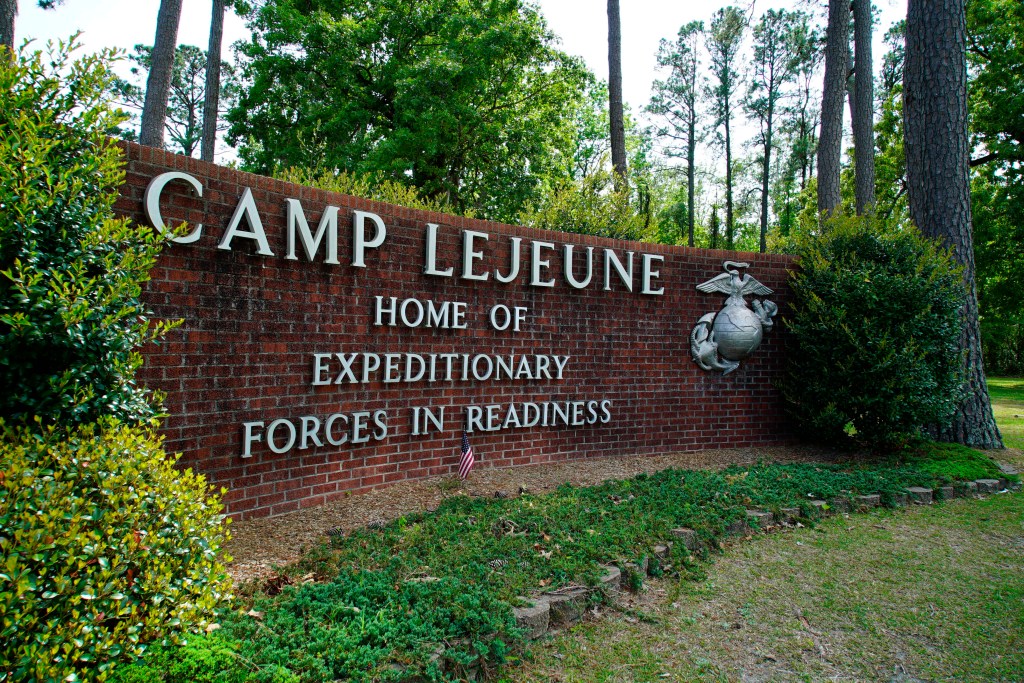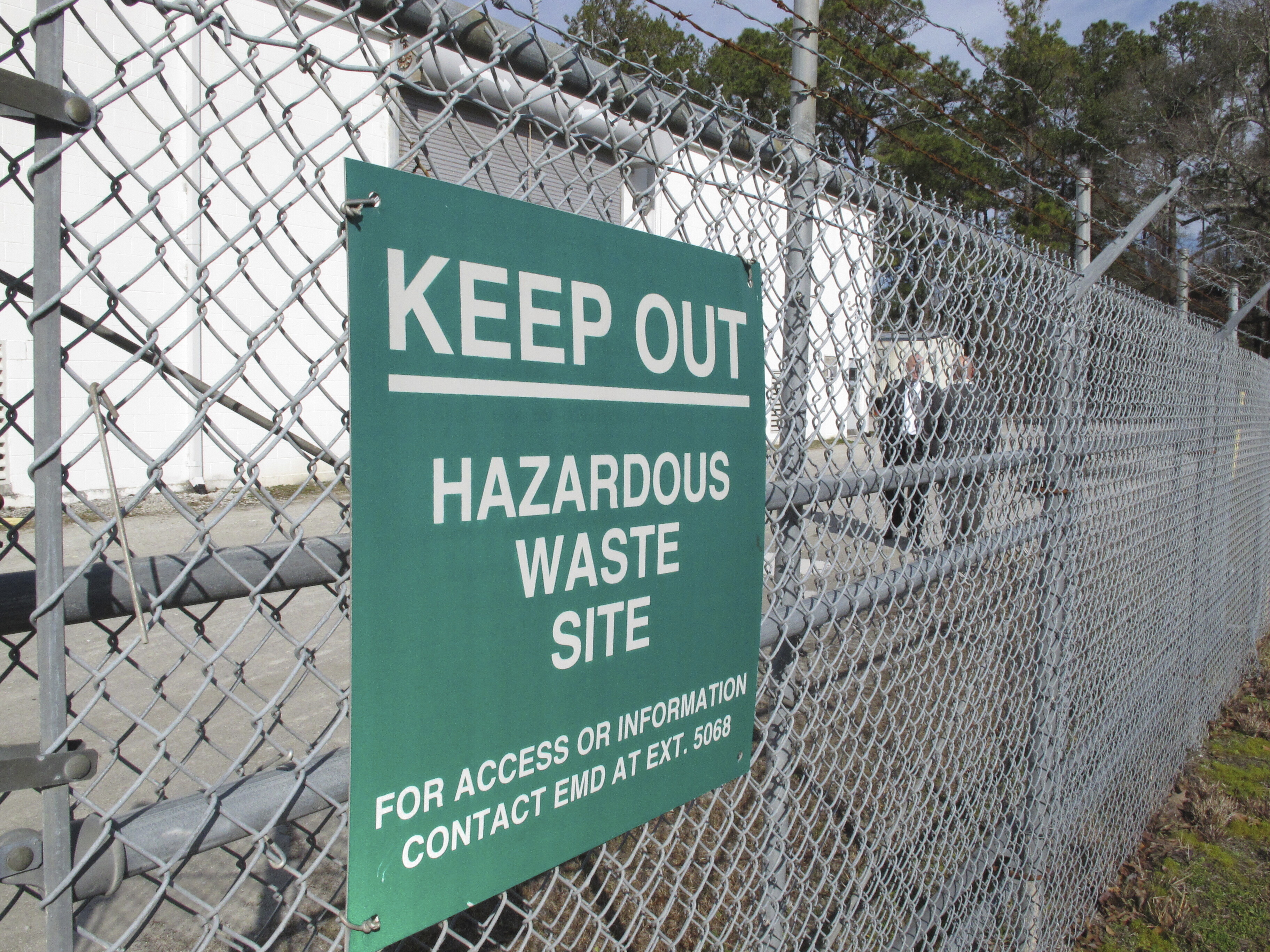Camp Lejeune water contamination tied to a range of cancers, CDC study says
A study on the contaminated drinking water at the North Carolina base also found that civilians working at Camp Lejeune faced a higher risk for a shorter list of cancers.
NEW YORK (AP) — Military personnel stationed at Camp Lejeune from 1975 to 1985 had at least a 20% higher risk for a number of cancers than those stationed elsewhere, federal health officials said Wednesday in a long-awaited study about the North Carolina base’s contaminated drinking water.
Federal health officials called the research one the largest ever done in the United States to assess cancer risk by comparing a group who live and worked in a polluted environment to a similar group that did not.
The study found military personnel stationed at U.S. Marine Corps Base Camp Lejeune were at higher risk for some types of leukemia and lymphoma and cancers of the lung, breast, throat, esophagus and thyroid. Civilians who worked at the base also were at a higher risk for a shorter list of cancers.

The study is “quite impressive,” but cannot count as final proof that the tainted drinking water caused the cancers, said David Savitz, a Brown University disease researcher who is consulting for plaintiffs’ attorneys in Camp Lejeune-related litigation.
“This is not something we’re going to be able to resolve definitively,” he said. “We are talking about exposures that happened (decades ago) that were not well documented.”
But he said the new research will add weight to arguments made on behalf of people who got sick after living and working at the base.
Camp Lejeune was built in a sandy pine forest along the North Carolina coast in the early 1940s. Its drinking water was contaminated with industrial solvents from the early 1950s to 1985. The contamination — detected in the early 1980s — was blamed on a poorly maintained fuel depot and indiscriminate dumping on the base, as well as from an off-base dry cleaner.
Before wells were shut down, contaminated water was piped to barracks, offices, housing for enlisted families, schools and the base’s hospital. Military personnel and families drank it, cooked with it and bathed in it.
The contamination has spawned a wave of litigation by law firms who have aggressively sought out clients with TV ads.
People who got sick after being at Camp Lejeune have accused the Marine Corps of failing to protect the health of its personnel and criticized the federal government for being slow to investigate. Marine Corps officials have repeatedly said that federal environmental regulations for these cancer-causing chemicals were not finalized until 1989, after the wells were shut down.
The Agency for Toxic Substances and Disease Registry, or ATSDR, an Atlanta-based sister agency to the Centers for Disease Control and Prevention, has done about a half-dozen studies focused on health problems in people at Camp Lejeune. Those studies were smaller than the new one, and had varied focuses, including male breast cancer rates and birth defects in children born to base personnel.
The earlier studies pointed out health risks, but the new work “more fully establishes the scope,” said Richard Clapp, a Boston University emeritus public health professor who has been involved in past Camp Lejeune research.
Dr. Aaron Bernstein, the head of the ATSDR and CDC’s environmental health programs, called the new study “remarkable” for being bigger and more rigorous than past research.
In the new paper, the ATSDR investigated cancer in about 211,000 people who were stationed at or worked at Camp Lejeune between 1975 and 1985 and compared them to about 224,000 people at California’s Camp Pendleton — which was not known to have polluted groundwater — during the same time period.
Frank Bove, a senior epidemiologist, has led the agency’s Camp Lejeune research for many years and was in charge of the latest study. He relied on staff at Battelle Memorial Institute and others to comb through cancer registries across the country to look for cases tied to either base.

They found a similar number of malignant cancers in each group, about 12,000. But the numbers — and the relative risks calculated from those numbers — were higher in the Camp Lejeune population for a number of specific types of cancer. That list included some that weren’t clearly identified in some earlier studies, most notably thyroid cancer, Clapp said.
A federal law signed by President Joe Biden in August 2022 included language to address concerns of people who developed certain health problems they believe were linked to Camp Lejeune water contamination. It gave them a two-year window to file claims.
The new study may lead to inclusion of thyroid cancer to be added to the list of diseases for which Camp Lejeune personnel and their families might one day be compensated, Clapp said.
The paper, which underwent external peer review, is being submitted for publication, agency officials said.
Recommended Stories
Never miss a beat: Get our daily stories straight to your inbox with theGrio’s newsletter.









